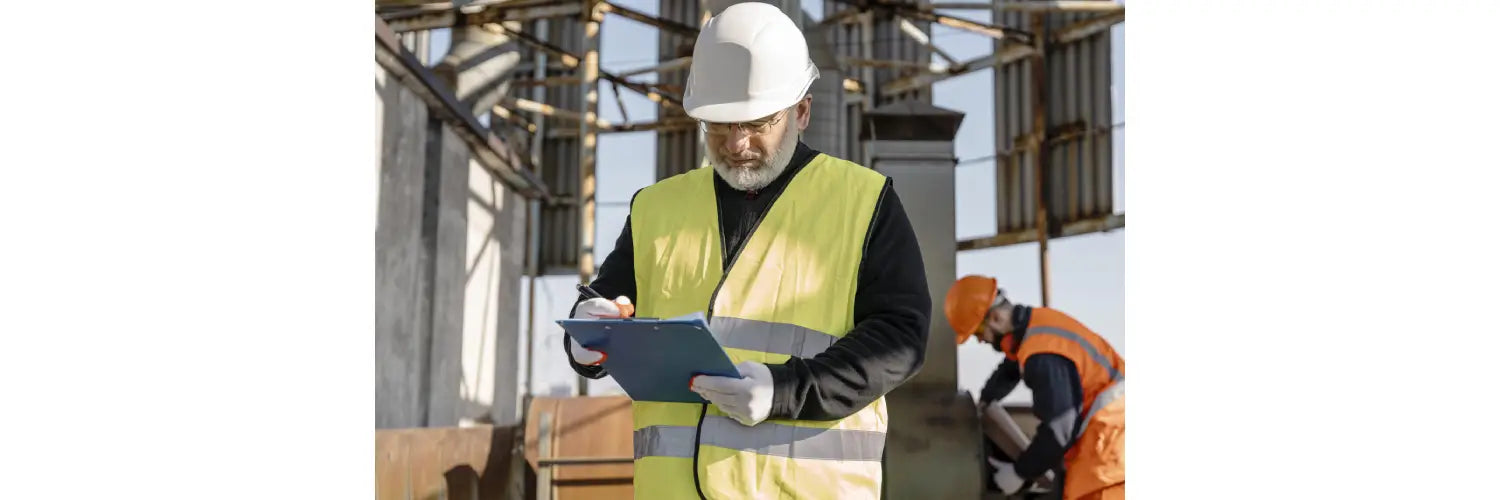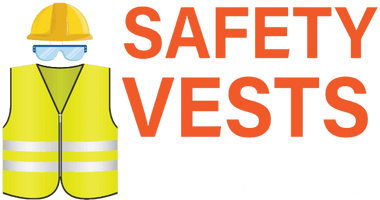
What is the Best Safety Vest?
Visibility is important for safety in high risk environments like construction sites, warehouses, or roadwork areas. Wearing a high visibility safety vest ensures that workers are seen by others to reduce the chance of accidents. Choosing the right safety vest for your needs involves understanding the types available, the standards they must meet, and the environment in which they will be worn. By detailing the various types of safety vests, the ANSI classes for higher visibility, and the essential features that make a vest suitable for industrial areas, this blog will help you make the right choice.
Types of Safety Vests
Safety vests are available in a variety of designs and features to accommodate a range of work environments. Here are the most common types of safety vests:
1. Class 1 Safety Vests

Class 1 safety vests are made for use in low-risk environments, such as parking lots or warehouses where traffic speeds are low. These vests are ideal as they provide a minimum level of visibility for environments where workers are not exposed to fast-moving vehicles.
2. Class 2 Safety Vests

Class 2 vests are ideal for environments with higher traffic where workers need to be seen by drivers traveling at speeds of up to 25 mph, as they provide higher visibility. An additional level of reflective materials has been provided in these vests to enhance visibility in both daylight and nighttime.
3. Class 3 Safety Vests

Class 3 vests are the highest standard and are needed for workers who are exposed to fast-moving traffic or environments with high-risk hazards. Even at night, these vests provide maximum visibility and are designed to ensure that workers can be seen at long distances.
Choosing the Appropriate Safety Vest
You need to consider several factors to ensure that you’re choosing the right one for your specific needs when selecting a safety vest. Here’s what to keep in mind:
1. Work Environment
The work environment plays an important role in determining the right safety vest. Class 1 vests are suitable for low risk areas, and Class 2 or Class 3 vests are needed in more hazardous work environments like construction sites.
2. ANSI Class Ratings
Strict guidelines are set by ANSI (American National Standards Institute) for the visibility of safety apparel to ensure that workers are protected based on the level of risks in their environment. How much reflective material should be present and how bright the fluorescent colors should be are specified by the different ANSI classes.
Class 3 vests are advised for night shifts or high-traffic areas for improved visibility in dangerous locations, such as industrial zones.
3. Comfort and Fit
A safety vest is not likely to be worn consistently if it is not comfortable. The vest should be the correct size for the wearer and provide flexibility to move. Look for vests with adjustable straps or Velcro closures for a secure and comfortable fit.
4. Durability and Material
Safety vests are made from a variety of materials, including blends of cotton, polyester, and mesh. Consider vests made from high-quality, weather-resistant materials that can withstand wear and tear for industrial use.
Best Safety Vests for Industrial Areas
Safety vests need to meet rigorous standards for workers in industrial areas. There are the following options to consider for various types of environments:
1. High Visibility Reflective Safety Vest
High-visibility safety vests are ideal for both day and night use. These vests are made with reflective strips and sturdy polyester mesh to improve visibility. These vests are ideal for manufacturing facilities, warehouses, and construction sites.
2. Heavy Duty Safety Vests
Heavy-duty safety vests provide reinforced stitching and additional pockets for tools for industrial areas with demanding conditions, such as mining or heavy machinery work. These vests are constructed to withstand harsh conditions and provide long-lasting durability.
3. Flame Resistant Safety Vests
Flame resistant safety vests protect while maintaining high visibility in environments where fire hazards are a concern. Electrical or welding fields use these vests for workers to prevent burns and other injuries.
Which ANSI class is needed for higher visibility?
It is essential to wear a vest that meets the appropriate ANSI class when working in high-risk environments, such as near high-speed traffic or heavy equipment. Class 3 vests are required to ensure workers are visible from a long distance and in low-light conditions for most industrial settings. The highest level of visibility is needed by the workers who are operating near moving vehicles or machinery.
Workers who are exposed to lower-speed traffic or who work in less hazardous environments need Class 2 vests, but Class 3 is perfect for maximum safety.
Frequently Asked Questions
Is it necessary for vests to meet the safety standards?
Yes, safety vests must adhere to ANSI/ISEA standards in order to guarantee adequate visibility and protection in dangerous situations. Compliance improves worker safety and minimizes workplace accidents.
How do safety vests protect you from workplace hazards?
Safety vests enhance visibility, which minimizes the risk of accidents in high-traffic or low-light conditions by making it simpler for operators of machinery or vehicles to spot workers.
What are the top-quality materials used in safety vests?
Top materials include solid polyester for durability, polyester mesh for breathability, and flame-resistant textiles like modacrylic blends for fire-prone areas.
